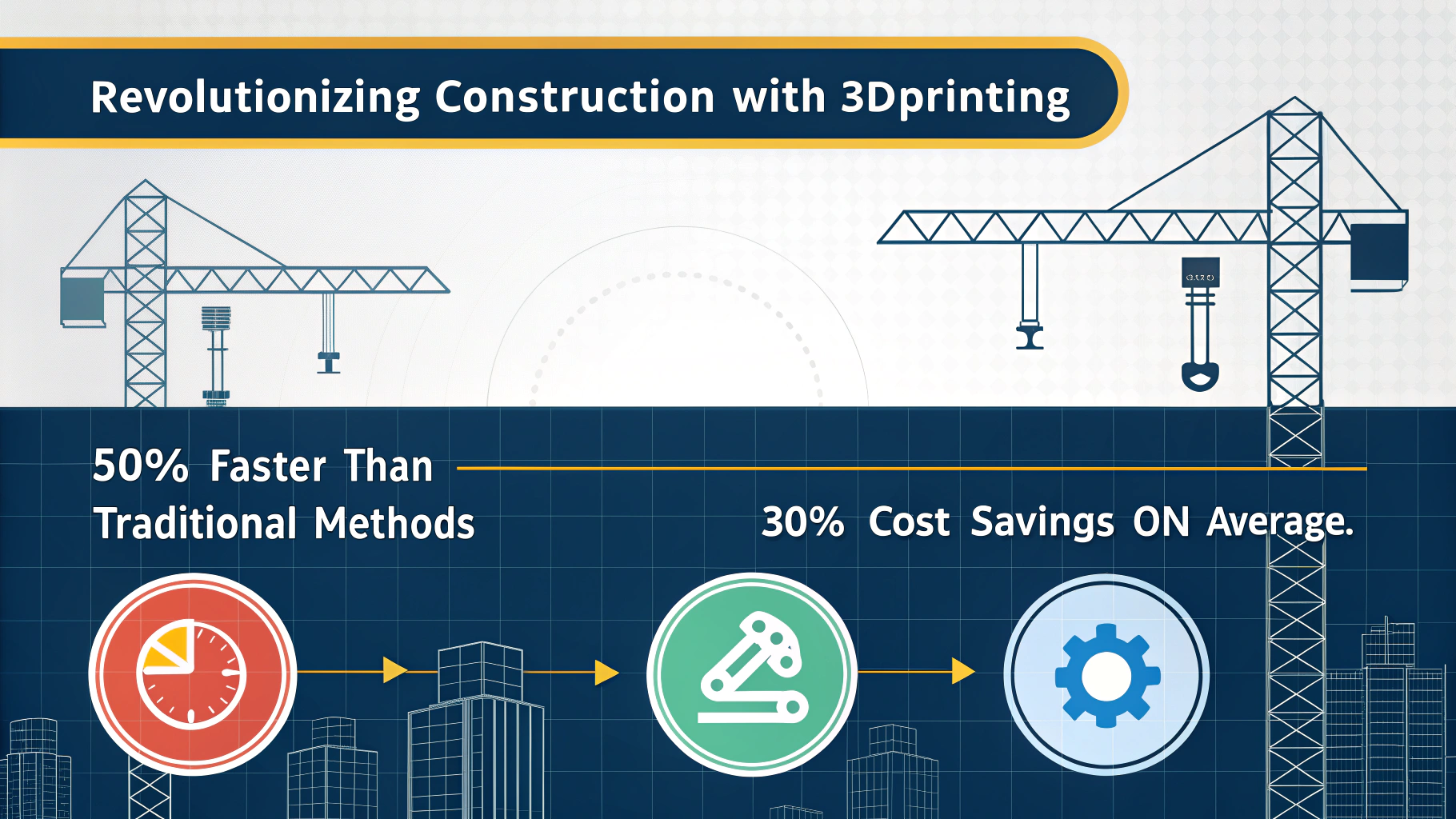Introduction
Once limited to prototypes and small-scale experiments, 3D printing construction has evolved into a practical solution for building homes, infrastructure, and everything in between. As of 2025, the technology delivers measurable cost reductions and faster project timelines while pushing design boundaries. But challenges around regulation and scalability remain. This article unpacks how 3D printing construction is changing the industry, from material breakthroughs to global adoption patterns, and what it means for the future of building.
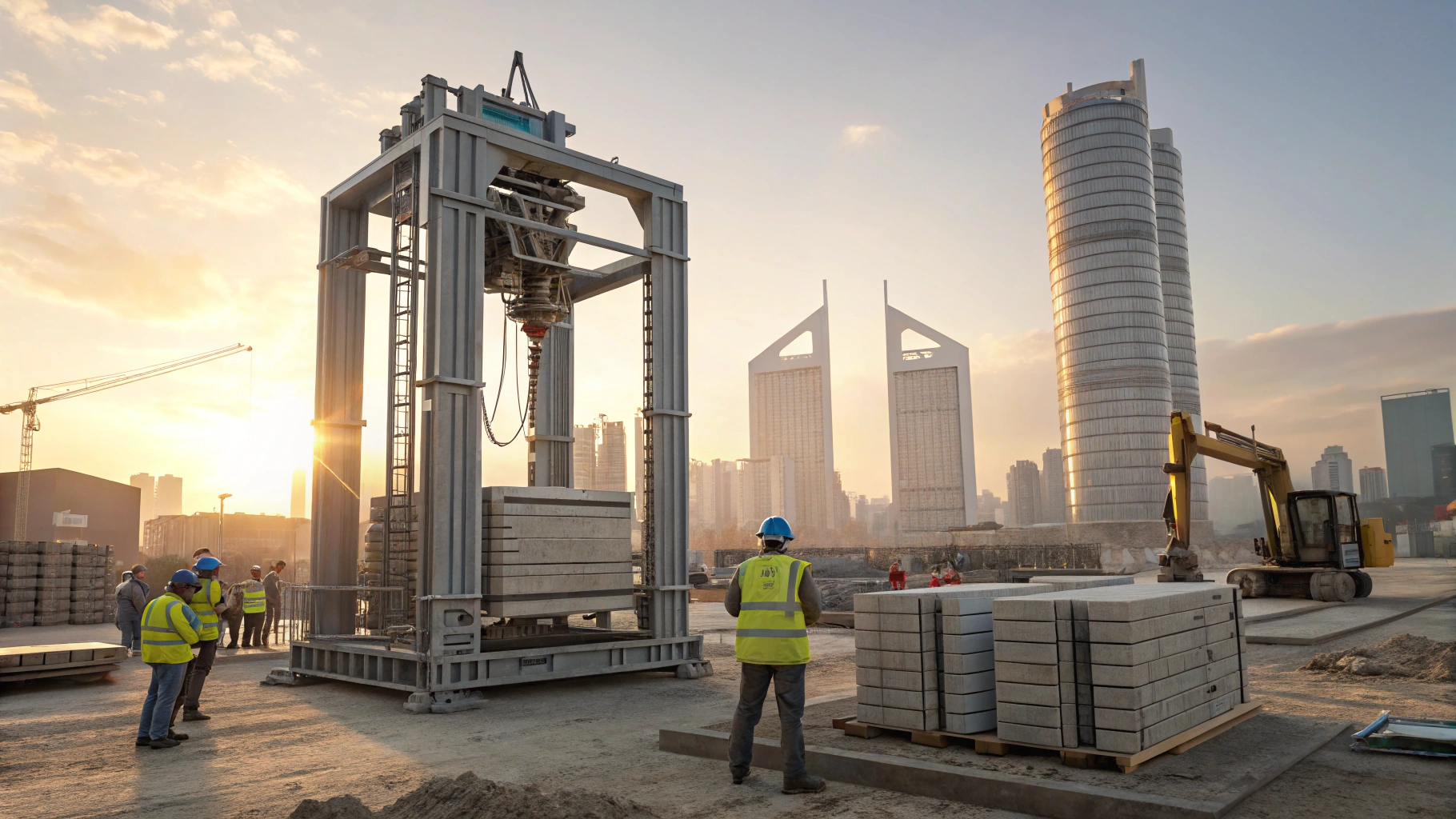
3D Printing Construction Trends: Technological Advancements
Material Innovations
The shift to conventional concrete blends has revolutionized the sector. These mixes, typically cement, aggregates, and additives, now cost 5–10 times less than earlier dry-mix mortars while offering superior durability for projects like data centers and seawalls 1. Fiber-reinforced versions add tensile strength for bridges and multi-story buildings 2. Meanwhile, experiments with recycled plastics and bio-based materials continue, though adoption remains limited.
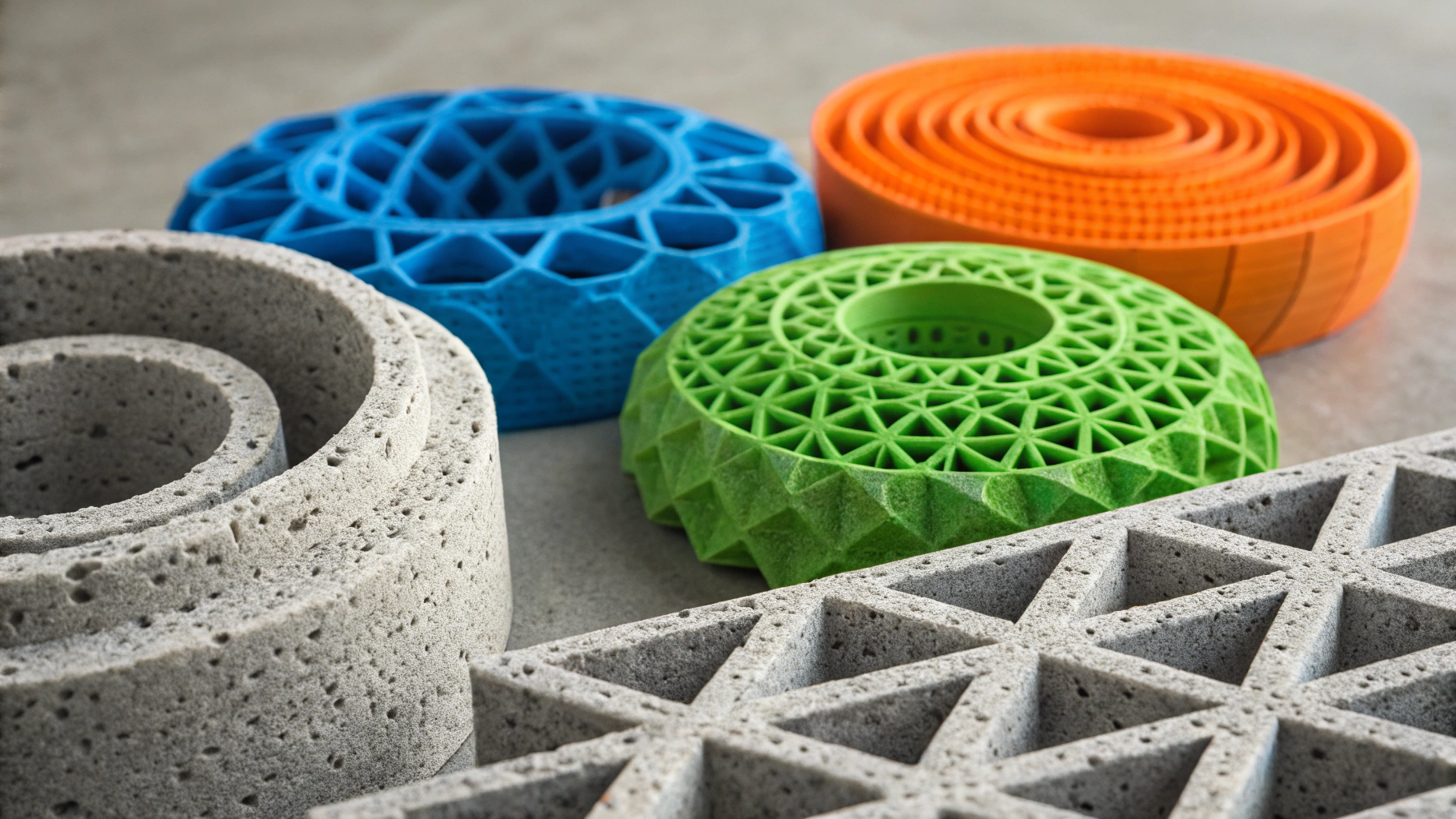
Speed and Scalability
Automation now enables large projects to finish 35% faster than traditional methods. A 2024 Irish social housing initiative highlights this: COBOD’s BOD3 printer used extendable tracks to complete low-rise units in record time 3. New multifunctional printers that install insulation or electrical conduits during printing are further streamlining workflows 4.
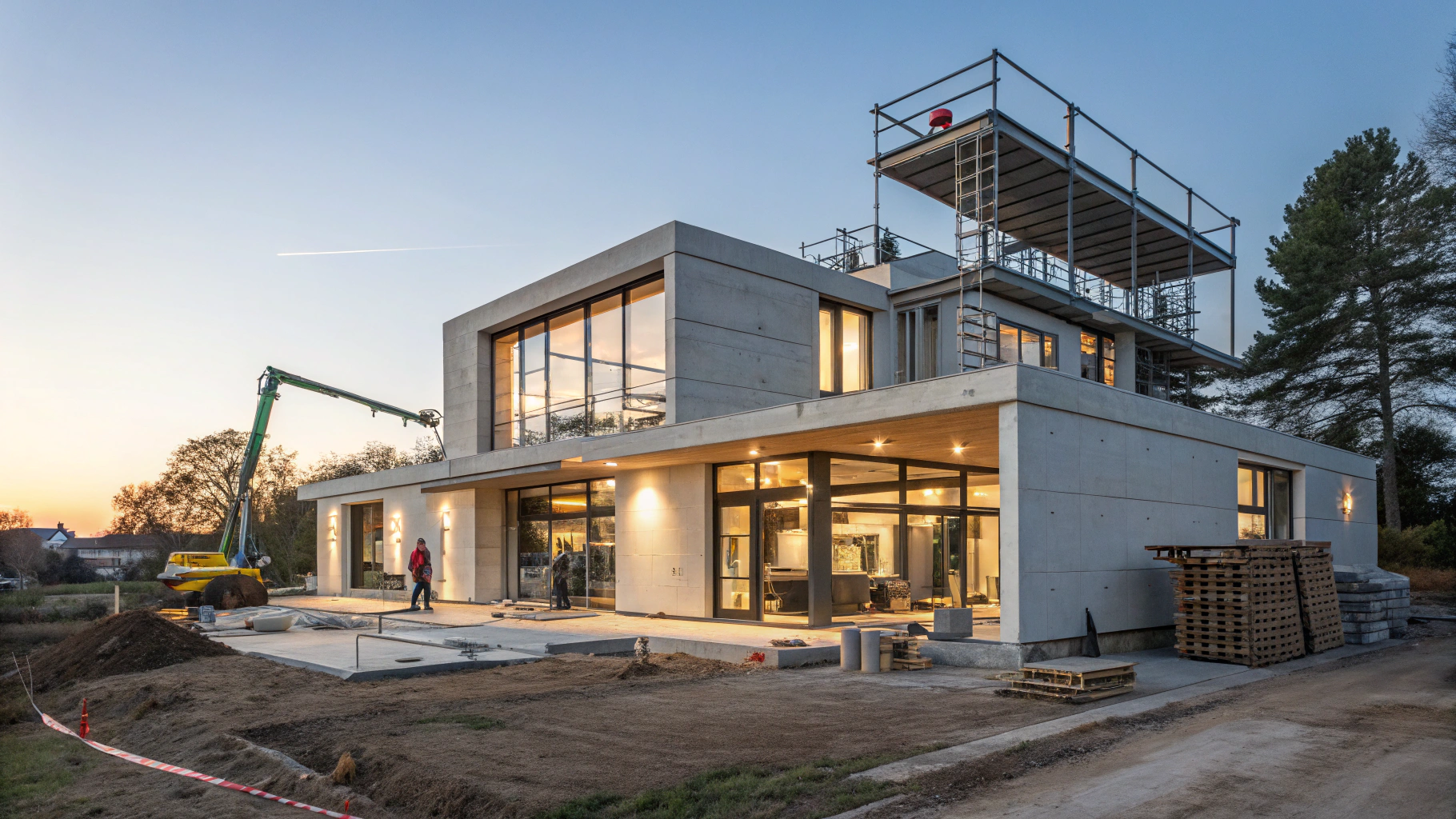
Beyond Buildings
The technology now tackles infrastructure challenges. In coastal regions, companies print seawalls that resist corrosion while promoting marine ecosystems. One Texas firm recently deployed 3D-printed columns for a warehouse, cutting material waste by 40% compared to cast-in-place methods.
Economic Impact: Balancing Costs and Efficiency
The Savings Equation
While printers cost $49,000 to $800,000 upfront 5, projects report 30–35% savings in labor and materials. Guatemala’s earthquake-resistant cottage (printed in 26 hours over seven days) avoided costly manual labor while withstanding seismic tests. Similarly, sand-casting applications have slashed production costs by 75% by eliminating traditional molds 6.

Accelerated Timelines
3D printing compresses construction schedules dramatically. France’s Nantes 5-room home was completed in 54 hours, 70% faster than conventional techniques, proving the method’s potential for urgent housing needs 7. However, these gains depend on printer reliability and operator skill, as noted in a 2025 IMechE report warning about maintenance gaps 8.
3D Printing Construction Materials: Balancing Strength and Sustainability
Concrete’s Dominance
Over 80% of projects use 3D-printable concrete optimized for extrusion through printer nozzles 2. Regions like Africa increasingly blend geo-polymers with local sand, reducing transport emissions.
“Using local materials is both eco-friendly and cost-effective,”
says Lagos-based engineer Amara Nwosu.

Environmental Trade-offs
While the technology can reduce material waste by 30–60% 10, energy use remains contentious. Some systems consume 50–100 times more electricity than traditional concrete pouring 11. Still, low-carbon concrete mixes and minimized plastic use position 3D printing as a tool to combat construction’s 27% share of global CO₂ emissions 12.
Regulatory Hurdles: Navigating Codes and Safety
The Standards Gap
Building codes struggle to keep pace with innovation. The International Code Council (ICC) is finalizing standards for 3D-printed walls, but the process, which is scheduled to conclude in late 2025, reveals tensions between safety protocols and technological progress. Dubai’s mandate for 25% 3D-printed buildings by 2030 pressures regulators to accelerate approvals globally 13.
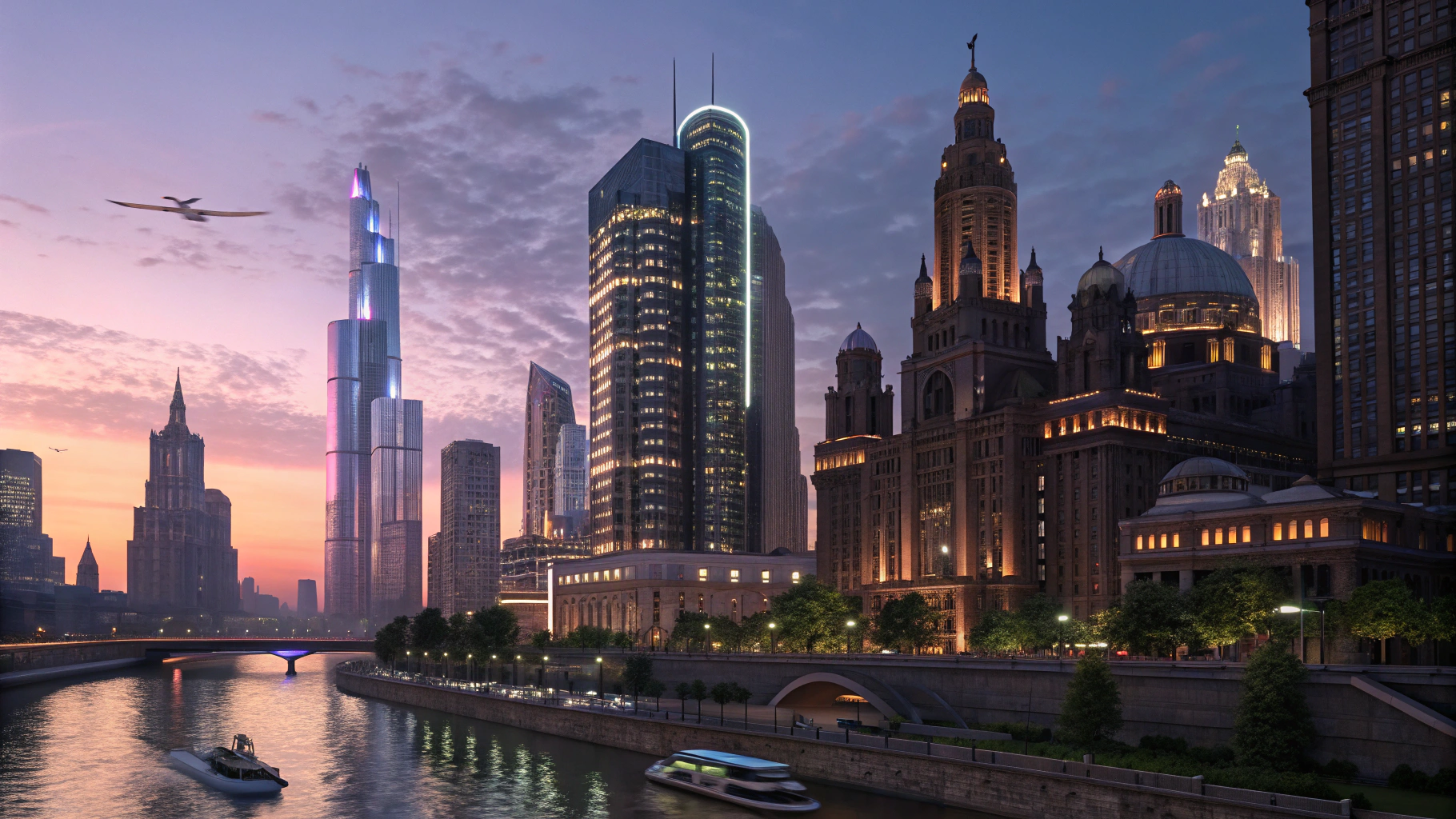
Structural Integrity Concerns
Questions linger about long-term durability. ICC now requires shear wall testing for multi-story builds, while competitions like ASCE’s enforce strict load-bearing benchmarks 14.
“We’re rebuilding trust layer by layer,”
admits ICC committee lead Patti Harburg-Petrich, noting unresolved liability issues for printer errors.
Global Adoption: Regional Priorities and Projects
Urban Solutions in Emerging Economies
Rapid urbanization drives growth in Asia and Africa. Madagascar’s 18-hour 3D-printed school addressed a 12,000-classroom shortage, while Mumbai’s first printed apartment complex housed 100 families displaced by monsoon floods 1516.
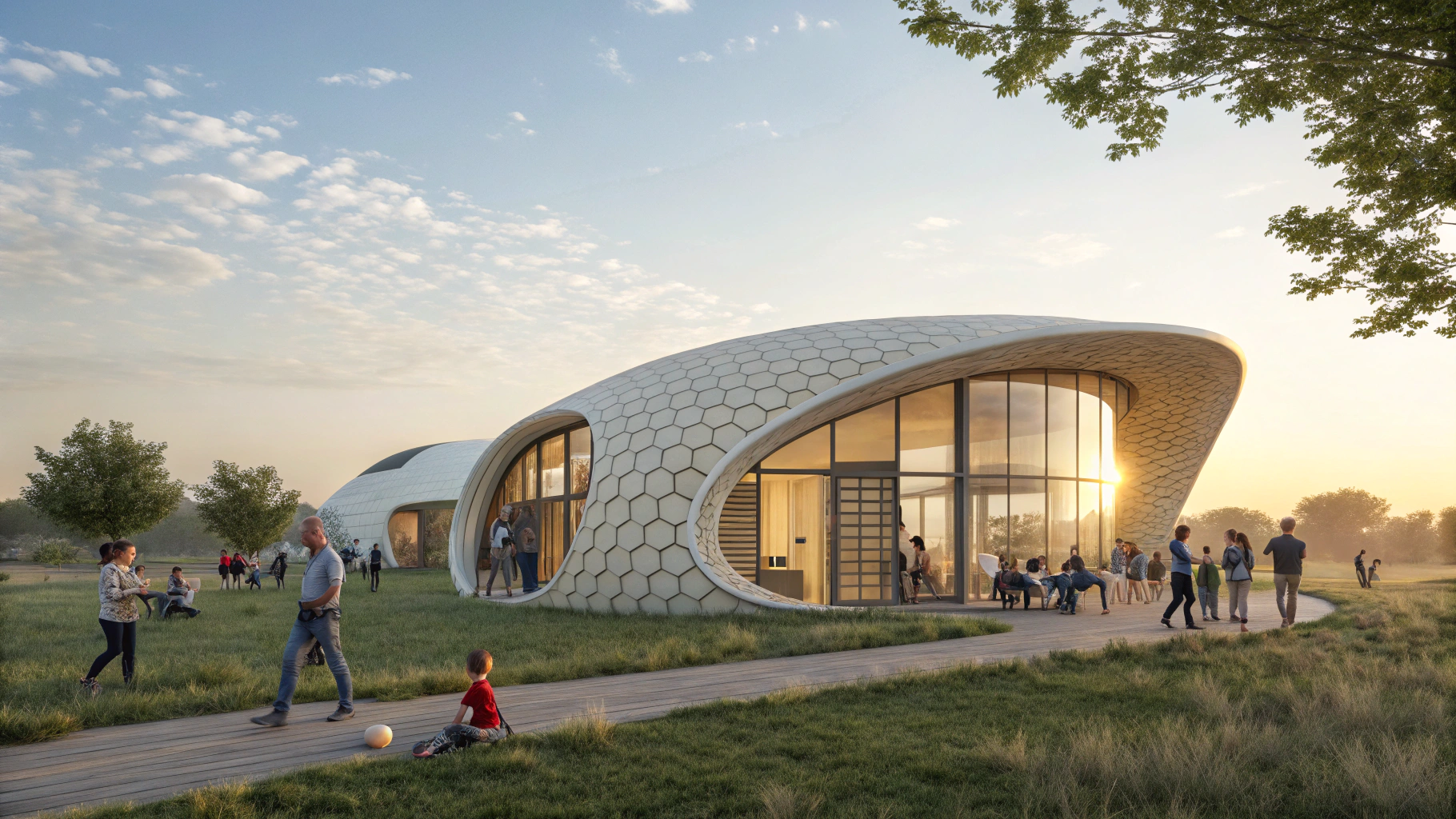
Government-Led Innovation
Dubai’s Guinness-record villa and China’s WinSun projects showcase state-backed pushes, while North America focuses on data centers and commercial builds. The global market, valued at $1.24 billion in 2023, could hit $15.8 billion by 2032 as smart city projects multiply.
Workforce Evolution: Skills for a New Era
Operators now need CAD software proficiency and materials science knowledge 17. Training programs emphasize:
- Generative design tools to optimize structures for printing
- Regulatory literacy to navigate evolving codes
Yet the industry faces a shortage of trainers.
“We’re teaching skills that didn’t exist five years ago,”
notes Boston-based instructor Luis Rivera 18.

Conclusion
3D printing construction has moved from novelty to necessity, offering proven benefits in speed, cost, and sustainability. The path forward hinges on overcoming regulatory delays and material limits. As Dubai’s skyline and Madagascar’s schools demonstrate, success requires collaboration between innovators, governments, and workers adapting to new tools. With the global market projected to grow 23.3% annually between 2023 and 2030 and estimated to reach $23.33 billion by 2026 19, the industry’s next challenge is scaling beyond niche applications and print a blueprint for construction’s future.
